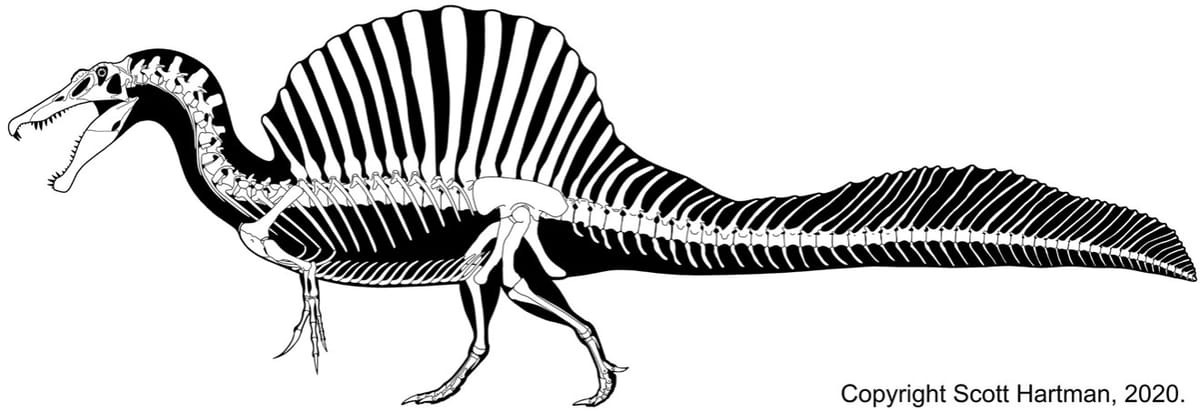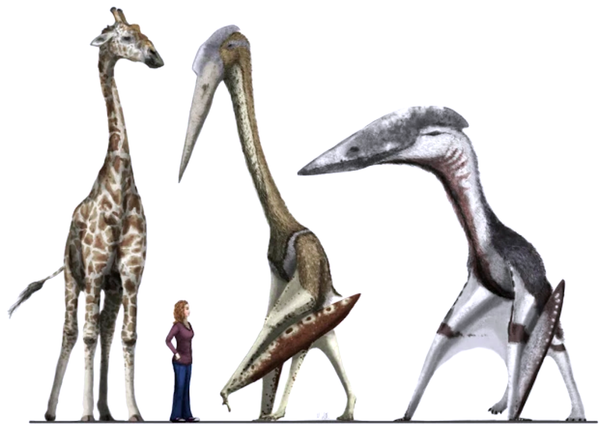Spinosaurus: The Never-Ending Story

By Jackey Lu
Spinosaurus aegypticus, an animal that has hogged the limelight in the paleontology research sphere for the last two decades. The animal saw its big break into pop-culture with the release of 2001’s Jurassic Park 3 and had no doubt created lots of followers. This here article is not going to dive into the discovery and intricate details of the skeleton, instead it’s about the current paleobiology of Spinosaurus.
What are Spinosaurs?
Spinosaurus is a large North African carnivorous therapod. First discovered by German paleontologist Ernst Stromer in the early 20th century, its main fossil discoveries are in the Kem Kem Formation and the Baharia Formation. Though due to the fragmentary fossils found the animal didn’t much attention initially and had scarce paleoart depictions. Things are only made worse when the Holotype of Spinosaurus was bombed during WW2. It wouldn’t look good for Spinosaurus until 2014, where a paper published by Ibrahim et all described more material from Spinosaurus and start to reveal just how weird the animal truly is. The short-legged notch sailed Spinosaurus was shortly considered to be a quadruped and things stayed like that for a while. Fast forward to 2020 what many would consider the worst year ever, but it did bring a massive bombshell on Spinosaurus paleobiology, the salamander tail.
As you could imagine, with such a bizarre creature there are a lot of debate over its lifestyle in the environment.
Spinosaurus’s Niche in North Africa
Back when Spinosaurus is a giant long-legged bipedal carnivore there were several questions raised about its niche in Cretaceous North Africa. In the same environment we have discovered Carchradontosaurus, which is a giant carnivore, we also found Bahariasaurus, which is a giant carnivore. Yet only moderately sized sauropods and hadrosaurs are found which suggests that there are other sources of food that could sustain another giant predator like Spinosaurus. Of course, all this is solved now with the fossils of the critter points to a largely piscivorous lifestyle.

The piscivorous niche suited the environment, as rivers of the Kem Kem formation was chalk full of large fish that would serve as a great source of energy. Aside from the famous giant sawfish Onchopristis (No. 9 on the image) that Spinosaurus is often depicted eating, there’s also the car sized Coelacanth Mawsonia (No. 5 on the image), along with many other bony fishes. The immense size of the critter probably evolved with and as a result of the abundance in fish in its habitat that can be taken advantage of.
Though there are little debate over what Spinosaurus ate throughout its existence, there is loads of argument over how it ate. The method of predation went through several back-and-forth disputes after 2020. There are two main models, the pursuit model, and the wading model. The pursuit model sees the Spinosaurus utilizing its powerful tail to actively chase its prey in deeper waters. Whilst the wading model suggests the Spinosaurus to stand in shallow waters and snap at passing fish from above water. As of writing this article the wading model seems to hold more water as the muscle placement and volumes would not support active propulsion.
By this far into the article I’m sure you must be wondering, what is that big sail for? Well, paleontologists gave it a lot of thought. Some of the more classic interpretations suggests that the sail was for thermal regulation. It was also proposed that the sail be used as an intimidation factor that made the creature look much bigger and more imposing. The most modern explanation for the sail would be its use as an ornament for showing off during mating seasons and perhaps engage in mating rituals.

Would Spinosaurus have any violent interaction or competition with the other large therapods in its area? Perhaps. But the piscivorous niche meant that Spinosaurus, despite its immense size, held a largely passive role in its ecosystem. Whilst it is true that other spinosaurids from other places on Earth had been discovered to have a much more varied diet than just fish, thus Spinosaurus itself is probably not strictly a piscivore. However, depending on the preferred method of locomotion and derived body plan it might have been hard for Spinosaurus to keep up with other browsers in its habitat. Nor can Spinosaurus face off against any of the giant sauropods that lived in the Kem Kem formation.
Taxonomy and Body Plan

Here comes the most challenging and probably most debated part of the article. Spinosaurus had stirred up quite the storm when it comes to its body plan and where does it fit on the family tree.
First, we’ll tackle the taxonomy. Spinosaurs, in general, are a derived form of Megalosaurs that started to branch off during the early Cretaceous. The majority of which stuck to the niche of being lean and elegant piscivores that patrolled the water ways of their habitat. But with Spinosaurus, things get weird, as of 2023 Spinosaurus has the most unique body plan of all Spinosaurids. This is probably due to the abundance of food and stable ecosystem of the Kem Kem formation but since there are loads of debate when it comes to how the creature would’ve stood in life, I shall not go into details here.
Spinosaurus is now considered to be a derived later member of the Spinosauridae, yet due to how fragmentary Spinosaurus material is many had raised the question to whether the original holotype found by Stormer was off the same species as the newer finds. As many variations in sail orientation and shape is commonly found under the basis of there being only one species of Spinosaurus in North Africa at the time. Never mind the odd case of Sigilmassasaurus, another giant spinosaur from North Africa that had been put into question on whether it was valid or not due to the fragmentary nature of that specimen as well. As of right now the majority of the workers supports the great merger theory, where we just consider there being one Spinosaurus in North Africa and all Spinosaurus found would be attributed to Spinosaurus aegypticus.

Now, let’s talk proportions. Spinosaurus had went through several changes over the decades, with the first great shift happening in 2014, where the paper published by Ibrahim et all described the hind limb and spinal remains of Spinosaurus aegypticus. And the hind limbs of the creature turned out to be surprisingly short in comparison to the size of the creature. Thus, as suggested in the article the animal was depicted as quadruped that walked on its knuckles on its forelimbs post 2014. During 2021 this all came under revision as more material was found of Spinosaurus. The debate was focused on the center of mass for Spinosaurus, as a center of mass that was near the torso would suggest a quadruped stance when on land. Whilst a more leaned back center of mass would suggest a bipedal stance. Many articles went back forth over this, computer models were made, shots were fired but ultimately the bipedal stance Spinosaurus seems to be the one that came out on top of this.

Next up on our list is the sail that this critter is so famous for. The original sail orientation speculated by Stromer had the spinal processes arranged in a neat semicircle, but with the 2014 paper out this had been called to question. With the materials given the 2014 paper arranged to sail in the pattern shown above, where the sail has a more vertical taper and possess a weird notch in the middle. As is the situation with Spinosaurus’s legs. The sail also went through much debate during 2021, where a more circular structure was proposed. Though the 2014 arrangement was not outright rejected, as the papers flirted with the idea of the sails depending highly on induvial variation.

Lastly, we’ll cover the tail of Spinosaurus, which one of more positive mysteries of 2020. The paper published in 2020 that described the newly found tail of Spinosaurus had revived discussion in Spinosaurus paleobiology due how weird it is. Whilst the tail does prove the hydrophilic nature of Spinosaurus it throws some weird monkey wrenches into the system. Now many would point to it being an effective propulsion method, but the experiments certainly don’t agree with that assertion. The shape of the tail when tested with other modern aquatic vertebrates, Spinosaurus scored rather low with the amount of energy produced. On the other hand the thin spinal processes do not suggest much muscle attachment to the tail, with the main girth of muscles being at the base of the tail. Thus, the tail sure helps Spinosaurus wade in the swamps of the Kem Kem formation but nowhere near making it a fully aquatic creature.
So that’s the story of Spinosaurus’s paleobiology and anatomy so far. We have came far since the initial discovery with Stormer, we’ve begin to truly uncover how weird and wonderful mother nature can truly be. So expect more for Spinosaurus in the future, who knows what we might discover in the future, as the old paleo-meme goes, all of this about Spinosaurus is probably going to completely change next year.




